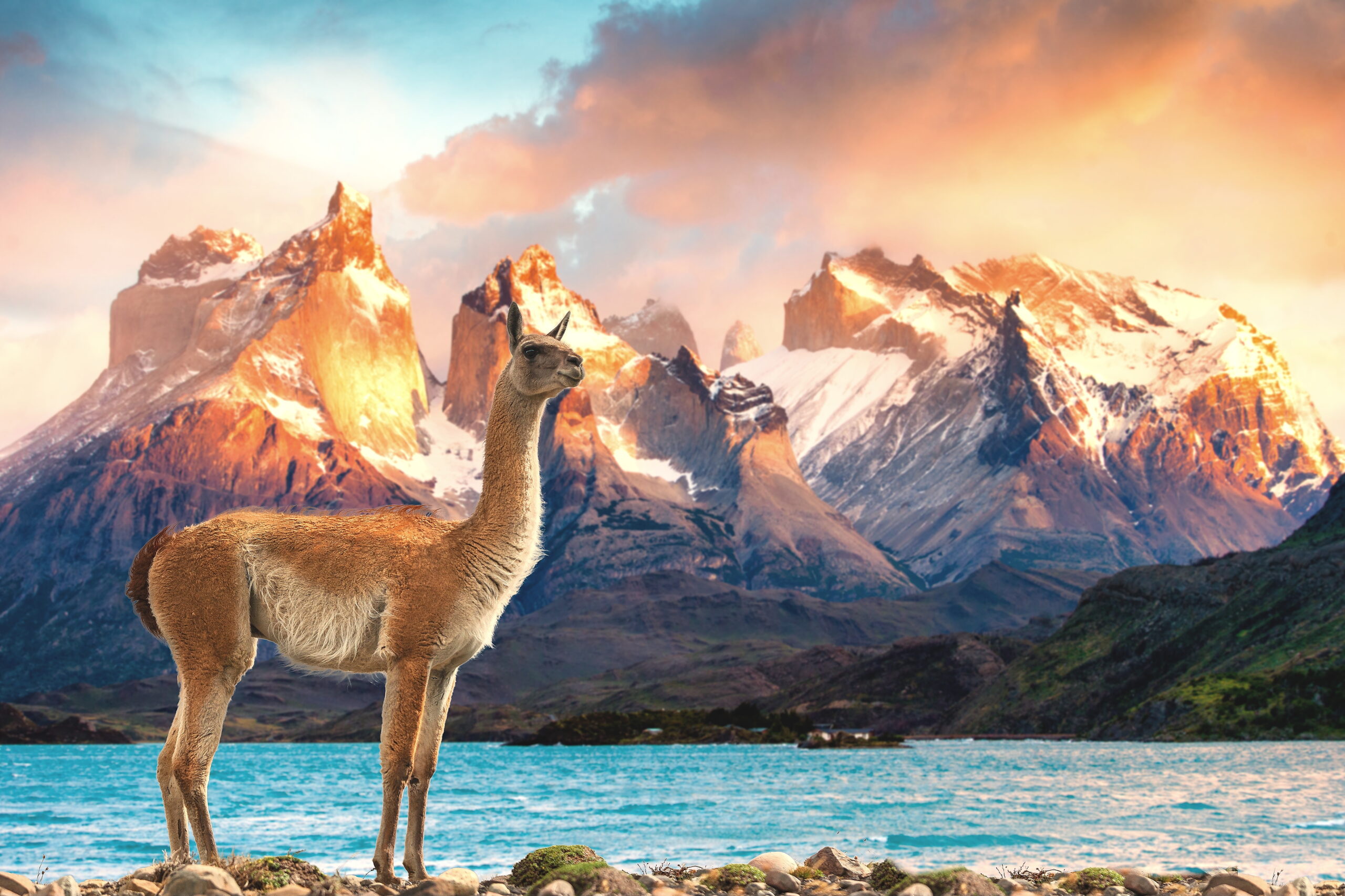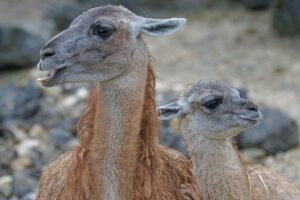 Thanks to Dr Doolittle, just about everyone knows what a llama is — a large, furry South American mammal with an ornery temperament and a bad habit of spitting on people. Oh, and the animal that literally carried the Inca Empire on its back.
Thanks to Dr Doolittle, just about everyone knows what a llama is — a large, furry South American mammal with an ornery temperament and a bad habit of spitting on people. Oh, and the animal that literally carried the Inca Empire on its back.
But what about the guanaco — those tawny colored creatures you see wandering the grasslands of Torres del Paine National Park and other parts of Patagonia?
As much as we’d like to think of them as short-haired llamas (or fictional beasts from a Dr Seuss book) they’re actually a totally different species. But that’s not to say they aren’t related. Along with the alpaca and vicuña, the llama and guanaco are among the four species of South American camelid (camel-like animals).
First domesticated about 6,000 years ago by the Quechua Indians, llamas have been used as pack animals for centuries in the Andes because they can carry more than a quarter of their body weight and thrive at cold, high altitudes. Llamas are known for their curved, almost banana-shaped ears and coarse hair. They are about twice the size of an alpaca.
A distant ancestor of the llama, guanacos roam the altiplano (high plane) of Bolivia, Chile and Peru as well as the pampas of Argentina and Chile. Measuring up to nearly four feet at the shoulder, with long legs and a long neck, guanacos are the largest wild land animal that one comes across in Patagonia.
Guanacos weighing in at around 200 lbs when fully grown. Their wool in cinnamon or dark brown in color, with a white underbelly and neck. They have large ears and thick, sweeping eyelashes that are less for appearance and more for protecting them from dust and grit.
In the same vein as camels, guanacos can live where little vegetation grows and they don’t actually need to drink water. They get all of the moisture they require from the grass and plants that comprise their diet. They are a protected species in Chile and their population has grown steadily since protection was granted. However, given the fact their fur is quite coarse, they were never that desirable for hunting or domestication.
Another high-altitude adaptor, alpacas are smaller than llamas or guanacos. They were never bred to be beasts of burden, but rather for their “fleece” (fur or wool). They can be bred to produce more than 22 natural shades — from black, silver, rose gray and white to mahogany brown, light fawn and champagne.
The only time an alpaca might be mistaken for a llama is right after it’s been shorn. An adult alpaca stands about 32-39 inches at the shoulder and weighs between 106-185 lbs. They were also domesticated more than 5,000 years ago.
The vicuña, another type of camelid found only in the Andes, is a wild version of the alpaca. Smaller than the guanaco, they are almost deer-like and weighs about 70 to 140 lbs when fully grown. Roaming the highlands of Peru and Bolivia, they produce a fine fur that is one of the most valuable fibers in the world.
Due to their endangered species status, vicuña can no longer be killed for their fur. However, the Peruvian government allows for a certain number of the animals to be caught every three years. After sheering, they are let go unharmed. Like the guanaco, they were never really domesticated.



